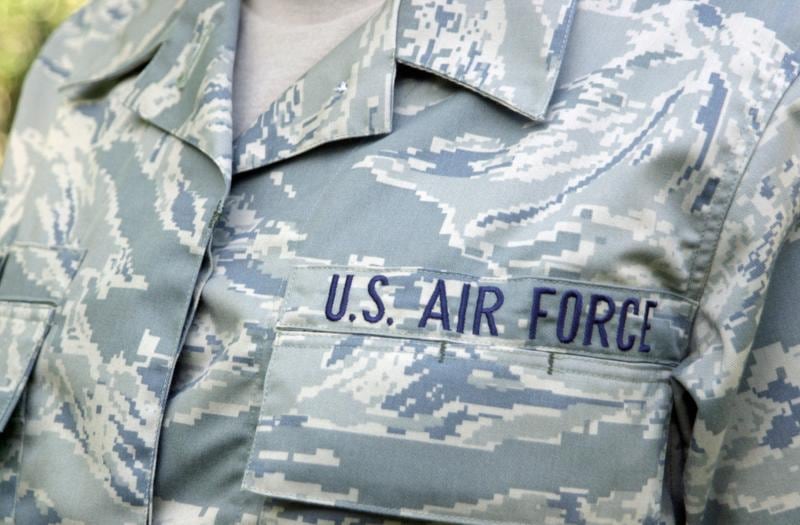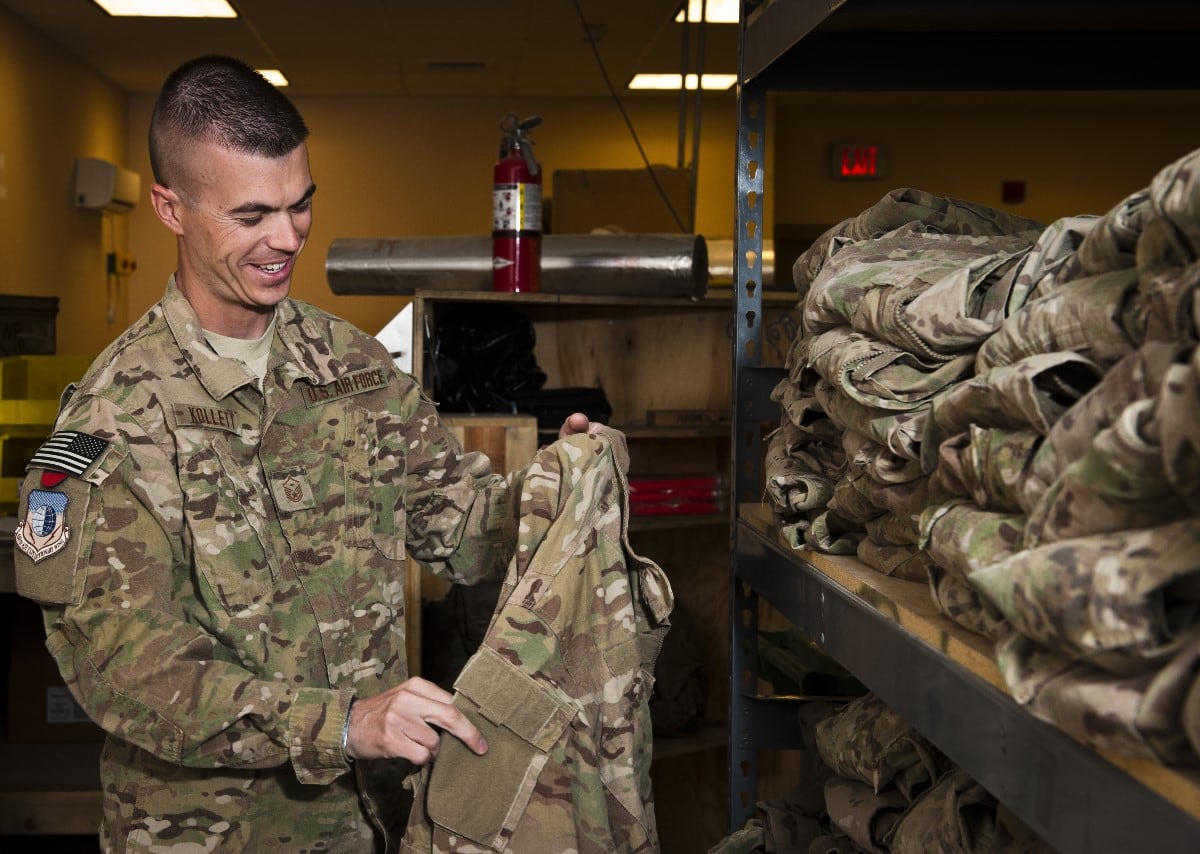The Air Force could start switching to the Army’s Operational Camouflage Pattern uniform as early as this fall, according to slides that have leaked online.
The slides, posted on the unofficial Air Force amn/nco/snco Facebook page, indicates that the transition could be announced June 1. But the slides said that Air Force Chief of Staff Gen. Dave Goldfein still must make the final decision on transitioning away from the current ripstop Airman Battle Uniform.
Air Force spokeswoman Brooke Brzozowske could not confirm the accuracy of the slides. But, she said, senior leaders are considering options for a new utility uniform, and one recommendation was to move from the current ABU to the Airman Combat Uniform, the Air Force’s variant of the OCP uniform.
“We regularly review uniform policy and gather feedback via a number of channels,” Brzozowske said. “The Air Force uniform policy team and senior leaders are currently considering this feedback and working on possible courses of action.”
The transition could take place over a one- to four-year period, the slides said. A chart that compares the costs of the two, three, and four-year transition periods said the transition could cost as much as $450 million. That was the cost for a 24-month transition beginning Oct. 1.
The longest transition, which would begin October 2019 and require all airmen to wear the new uniform by October 2024, would cost $125 million, the least of all options in the slides.
Airmen typically wear the OCP uniform when deployed to places like Afghanistan, though there have been some exceptions. In 2014, Air Force Global Strike Command announced that some of its security forces airmen ― at Minot, Malmstrom, and F.E. Warren Air Force bases and Camp Guernsey, Wyoming ― would be wearing the OCP uniform.
The OCP has a six-color palette and smooth lines to better blend in to various environments, Global Strike said, but ABUs have a four-color, pixelated camouflage pattern.
“If you get in a firefight in the field and you’re laying down fire, who are you going to see first? Obviously that guy” in ABUs, Chief Master Sgt. Scott Daigneault, senior enlisted manager for the force improvement program at Global Strike Command, said in the 2014 release. “The difference is almost night and day. Your eyes skim right over the guy in OCP and zone in on the guy in ABUs.”
RELATED

U.S. Air Forces Central Command also in 2011 made a change that allowed all airmen serving in the Central Command theater of operations to wear Army uniforms.
Previously, only airmen embedded with Army units and those who went outside the wire could do so.
And in August 2017, AFCENT said the Airman Combat Uniform ― its term for a uniform with the Operational Camouflage Pattern ― would be mandatory across the entire command by the end of 2018.

In a 2012 release, AFCENT said OCPs were made the official uniform for airmen deployed to Afghanistan because they’re lightweight, flame retardant and blend in well to Afghanistan’s terrain.
If the Air Force makes the switch to OCP, the service isn’t sure where it will find the money to buy back excess uniforms, and it will have to dispose of excess inventory, the slides said.
It will also be a challenge to build up the stock levels for all uniforms, boots, accessories and equipment for the rollout, and it is unclear whether industry would be able to meet the Air Force’s timeline.
The Air Force is also now the only service that uses sage green boots, which means the buyback of excess boots will cost $18.75 million, the slides said. The OCP is worn with tan boots.
Stephen Losey is the air warfare reporter for Defense News. He previously covered leadership and personnel issues at Air Force Times, and the Pentagon, special operations and air warfare at Military.com. He has traveled to the Middle East to cover U.S. Air Force operations.





